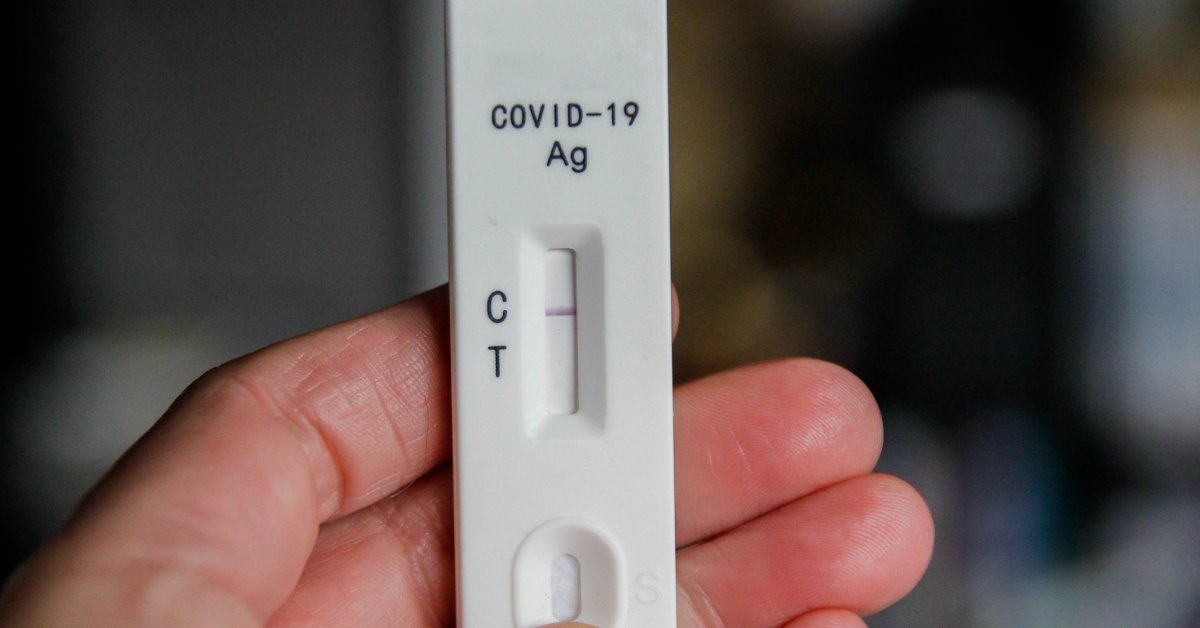These Respiratory Viruses Are Going Around in Spring 2023 - TIME

Flu season is wrapping up, and weekly COVID-19 diagnoses are declining. But if you're currently sick with a respiratory illness, you're not alone.
Data from the U.S. Centers for Disease Control and Prevention (CDC) show that a mixture of respiratory viruses are circulating right now, including common coronaviruses (other than SARS-CoV-2, which causes COVID-19), respiratory adenovirus, and parainfluenza (which is distinct from influenza).
All of these viruses can cause cold-like symptoms including fever, runny nose, sore throat, and cough, so "it's very, very hard to tell the difference between any of them clinically," says Dr. Helen Chu, an associate professor of infectious disease at the University of Washington and a principal investigator at the Seattle Flu Alliance, which tracks respiratory disease spread. (Norovirus and rotavirus are also going around right now, but they cause gastrointestinal issues such as vomiting and diarrhea.)
While lots of viruses are spreading right now, one respiratory virus is currently causing a particularly high percentage of positives among test results tracked by the CDC: human metapneumovirus (HMPV). More than 20% of antigen and 10% of PCR tests voluntarily reported to the CDC by U.S. laboratories during the week of March 11 came back positive, the agency's data show. "It is important to note that this is expected respiratory activity for these viruses for this time of year," a CDC representative told TIME, noting that the agency is also tracking rises in adenovirus and parainfluenza.
Dr. John Williams, who is chief of infectious diseases at UPMC Children's Hospital of Pittsburgh and has studied HMPV for more than 20 years, agrees that an uptick in HMPV is not surprising. In North America, HMPV's peak season is typically February to May, a bit after the typical flu season, he says.
This season, "we saw an above-normal surge of RSV and above-normal surge of flu," Williams says. "Knowing the seasonality of metapneumovirus, I said, 'I bet we're going to see a similar surge of metapneumovirus.' And, in fact, we are."
Plenty of people have likely had HMPV without ever knowing what it was, since it typically results in familiar cold-like symptoms like cough, fever, and nasal congestion. In serious cases—which are most common among young children and elderly or immunocompromised adults—HMPV can also lead to complications including bronchitis and pneumonia, according to the CDC. Some people also experience shortness of breath.
It's difficult to say if this year's HMPV season is worse than usual, says Dr. Ann Falsey, a professor of medicine at the University of Rochester School of Medicine, because "we test a lot more now. People are very attuned to getting a swab" after three years of the pandemic.
Still, many cases of HMPV likely go undetected, Williams says. These days, clinicians commonly test for SARS-CoV-2, influenza, or RSV if they see a patient with a respiratory illness. Some tests can pick up HMPV, but they tend to be expensive and used less frequently.
Researchers won't fully understand how widely viruses like HMPV spread without broader testing, Falsey says. And if doctors don't know why a patient is sick they may unnecessarily prescribe antibiotics, she says, which can contribute to antibiotic resistance.
But Chu says it's not always necessary for patients to know exactly which illness they have. It's valuable to test for SARS-CoV-2 and influenza because there are treatments for those conditions, Chu says. Screening for RSV also makes sense because it can cause severe disease, especially among young kids. But if those viruses have been ruled out, Chu says there's usually no need to test further, since there aren't specific treatments for HMPV and many of the other respiratory viruses that circulate during a normal cold and flu season.
Williams says there may be vaccines and treatments for more respiratory viruses in the future. But if you're sick with an unknown illness right now, follow tried-and-true advice: get plenty of rest, take over-the-counter medications for your symptoms, seek medical care if they become severe, and stay home to avoid infecting anybody else.
And, Falsey says, remember that many of the disease-prevention tactics used during the pandemic may work against other viruses, too. "Now that we're all out circulating again, all these different viruses will be at us again," she says. "If you are particularly frail or have underlying medical conditions, we did learn that masking works if you're in a crowded place."
- Meet the TIME100: The Most Influential People of 2023
- How We Chose the List
- Jennifer Coolidge Has Some Advice for You
- How Doja Cat Ripped Off Her Shell
- Bob Iger on Ron DeSantis, Creativity, and the Future of Disney
- Michael B. Jordan Worked Through 'Some Personal Sh-t' With Creed III
- Salman Rushdie Is Recovering, Reflecting, and Writing After the Attack on His Life
- The Mysteries of the Biggest Intel Leak in a Decade
- Who Has the Most to Gain From That Succession Death? A Ranking
Comments
Post a Comment